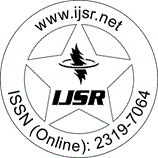Downloads: 3
India | Nursing | Volume 12 Issue 2, February 2023 | Pages: 773 - 776
What You Need to Know About Vacuum - Assisted Wound Closure (VAC)
Abstract: Delayed wound healing particularly in difficult wounds and in elderly with co morbidities is a major concern. It leads to the pain, morbidity, prolonged treatment, and require major reconstructive surgery which imposes enormous social and financial burden. Vacuum - assisted closure (VAC) can be used as an alternative to the conventional methods of wound management. Use of negative pressure optimizes the wound for spontaneous healing or by lesser reconstructive options. Vacuum - assisted closure (VAC) is also known as negative pressure wound therapy (NPWT). This approach involves the use of a defined, controlled negative pressure over a polyurethane or polyvinyl sponge placed in the wound. The wound effluent is evacuated continuously. The result is an improvement of microcirculation, and wound healing is enhanced. Animal experiments have confirmed an increase in cell growth. The basis for surgical wound management continues to be appropriate debridement. In this connection, Negative pressure therapy stabilizes the wound environment, reduces wound edema/bacterial load, improves tissue perfusion, and stimulates granulation tissue and angiogenesis. All this improves the possibility of primary closure of wounds.
Keywords: VAC, Vacuum assisted wound healing, NPWT, Negative pressure wound therapy, Subatmospheric pressure, Difficult wounds, vacuum sealing, foam gauze, cost effective
How to Cite?: Simi MS, "What You Need to Know About Vacuum - Assisted Wound Closure (VAC)", Volume 12 Issue 2, February 2023, International Journal of Science and Research (IJSR), Pages: 773-776, https://www.ijsr.net/getabstract.php?paperid=SR23207150833, DOI: https://dx.doi.org/10.21275/SR23207150833
